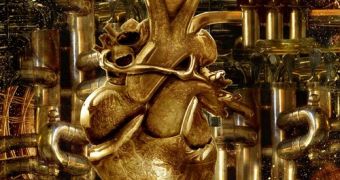For the first time in Canada, the Peter Munk Cardiac Center implanted a long-lasting mechanical heart in a heart-failure patient.
This new left ventricular assist device – LVAD, is longer lasting than the older generation and is excludes the need for a second surgery.
The person who benefited from this innovation is 61-year-old Marva Lode, of Mississauga, who suffered a heart attack back in 2007 and underwent many treatments for heart failure like a 10-day intensive care unit stay, angioplasty and pacemaker implantation, before having a cardiac arrest in June 2008.
“I would have died in my sleep if the nurse hadn't checked my heart monitor,” says Marva who, after receiving her LVAD in July, is now back at home.
“Before the LVAD, I had trouble climbing the stairs to my bedroom, but now I'm back to my usual activities, including regular walks, and the stairs don't give me trouble anymore.”
The new LVAD is called DuraHeart, it was designed for long-term cardiac support and unlike the other LVADs, it reduces the risk of complications like strokes, infections or device failure.
Its central pump is powered by magnetic levitation technology, meaning that its moving prts are held together by magnets, and the blood flows through the pump smoothly, extending the life of the patient and that of the device.
Dr. Vivek Rao, Surgical Director of the Heart Transplant Program at the Peter Munk Cardiac Centre (PMCC), Toronto General Hospital, said that “with access to eight different types of cardiac assist devices, including the Duraheart, we have the most diverse array of circulatory support technology in Canada to best manage patients with end stage heart failure.”
In North America, over 50,000 people are treated for advanced heart failure every year, the illness being the most frequent cause of hospitalization.
The only long-term treatment for end-stage heart failure patients is transplantation, but the waiting list for a matching donor organ is very long, so other alternatives become vital.
“Part of the center’s mandate is to evaluate new technologies such as the Duraheart to help determine which patients are best suited to a specific device,” says Dr. Rao.
His team has implanted approximately 70 LVADs since 2004, thus giving hope to many patients and families.
Other countries like Germany and the United States, have been using the DuraHeart device.

 14 DAY TRIAL //
14 DAY TRIAL //